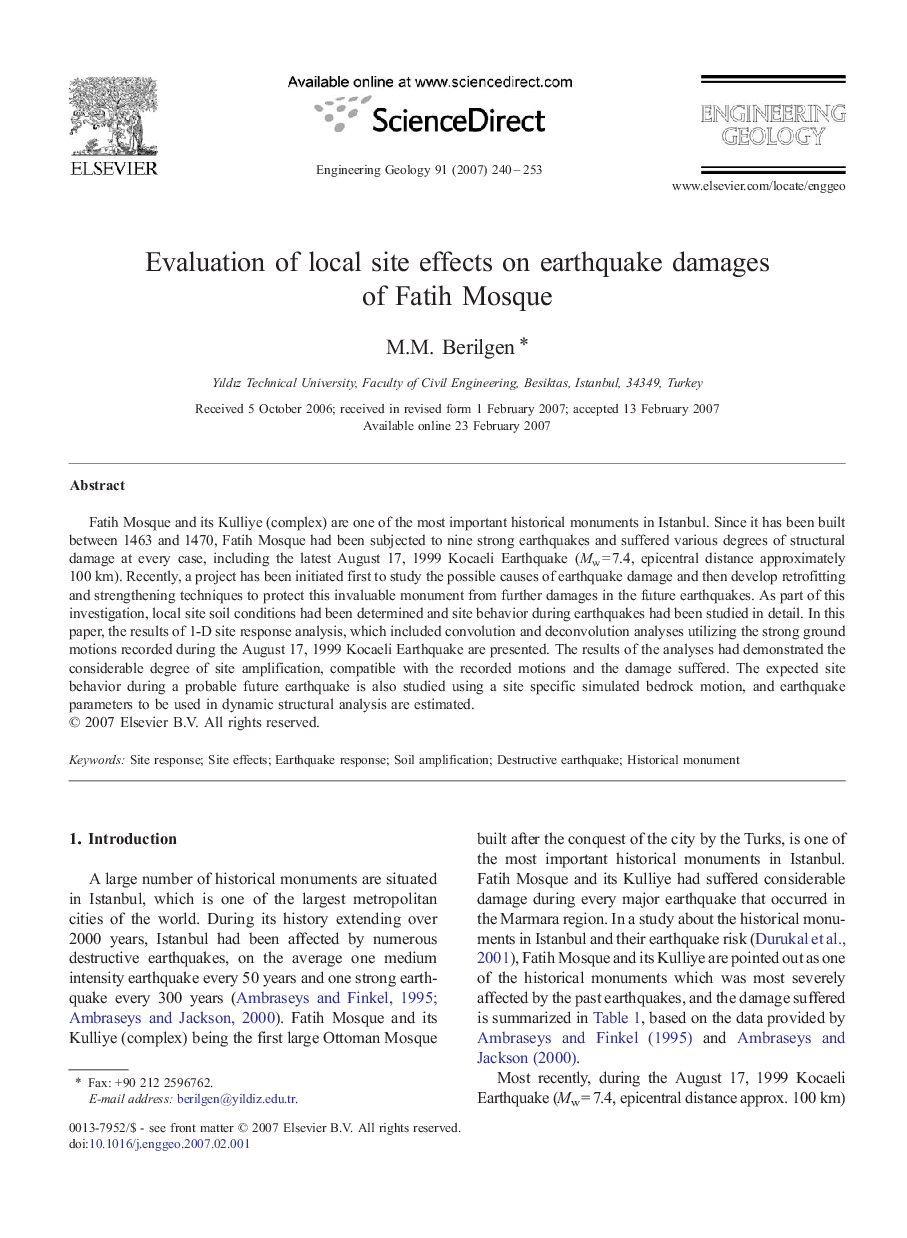| Article ID | Journal | Published Year | Pages | File Type |
|---|---|---|---|---|
| 4744714 | Engineering Geology | 2007 | 14 Pages |
Fatih Mosque and its Kulliye (complex) are one of the most important historical monuments in Istanbul. Since it has been built between 1463 and 1470, Fatih Mosque had been subjected to nine strong earthquakes and suffered various degrees of structural damage at every case, including the latest August 17, 1999 Kocaeli Earthquake (Mw = 7.4, epicentral distance approximately 100 km). Recently, a project has been initiated first to study the possible causes of earthquake damage and then develop retrofitting and strengthening techniques to protect this invaluable monument from further damages in the future earthquakes. As part of this investigation, local site soil conditions had been determined and site behavior during earthquakes had been studied in detail. In this paper, the results of 1-D site response analysis, which included convolution and deconvolution analyses utilizing the strong ground motions recorded during the August 17, 1999 Kocaeli Earthquake are presented. The results of the analyses had demonstrated the considerable degree of site amplification, compatible with the recorded motions and the damage suffered. The expected site behavior during a probable future earthquake is also studied using a site specific simulated bedrock motion, and earthquake parameters to be used in dynamic structural analysis are estimated.
